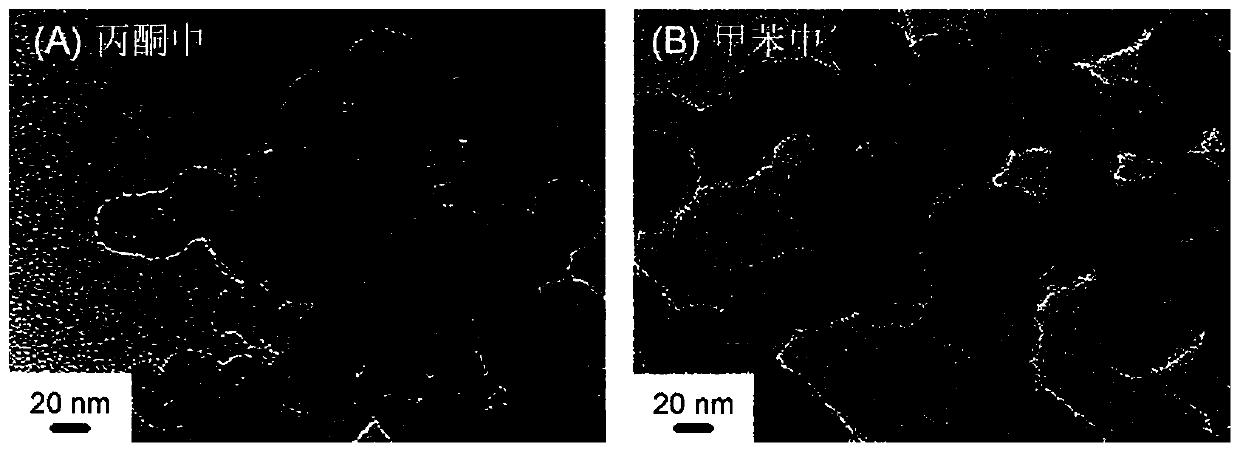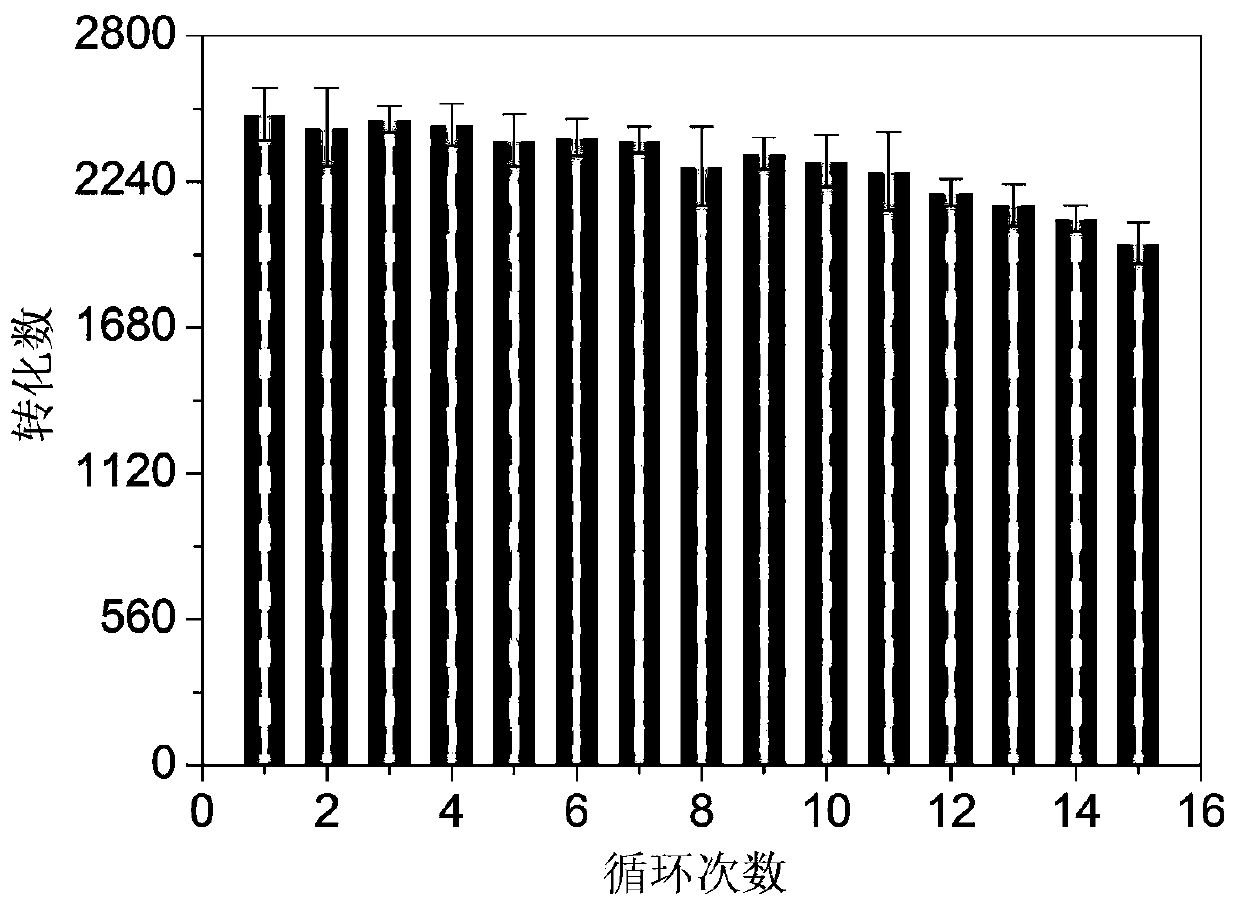Hollow porous polymer nanospheres composite material encapsulated by noble metal nanoparticles, and synthesis and application thereof
A technology of porous polymers and nanoparticles, applied in the fields of compounds of Group 5/15 elements of the periodic table, organic compounds/hydrides/coordination complex catalysts, metal/metal oxides/metal hydroxide catalysts, etc. Achieve the effects of controllable yolk-shell structure, simple synthesis route, and multiple cycles
- Summary
- Abstract
- Description
- Claims
- Application Information
AI Technical Summary
Problems solved by technology
Method used
Image
Examples
preparation example Construction
[0060] The present invention relates to a synthesis method of a hollow porous polymer nanosphere composite material encapsulated by noble metal nanoparticles, comprising the following steps:
[0061] (1) Starting from polylactic acid (PLA) end-modified RAFT chain transfer agent (PLA-TC), styrene (St) is used as a monomer, and PLA-b- PS diblock copolymer, and the remaining part of unreacted St monomer; then under the catalysis of anhydrous ferric chloride, carbon tetrachloride as solvent, one-pot hypercrosslinking to form the final hollow porous polymer nanosphere Skeleton material.
[0062] (2) Pre-disperse the hollow porous polymer nanosphere skeleton material obtained above in DMF solvent, add the noble metal salt, stir at room temperature, wash, reduce, and finally obtain the hollow porous polymer nanosphere catalyst material encapsulated by noble metal nanoparticles ; Wherein, taking palladium nanoparticle encapsulation as an example, the hollow porous polymer nanosphere ...
Embodiment 1
[0073] (1) Synthesis of hollow porous polymer nanosphere framework materials
[0074] Add 400mg PLA-TC, 1.725mL St and 0.49mgAIBN to the reaction test tube, and react at 70°C for 24h after three times of deoxygenation by freeze-pump-thaw method. After the reaction, the reaction solution was naturally cooled to room temperature, directly dissolved in 50 mL of carbon tetrachloride solvent, 3.0 g of anhydrous ferric chloride was added as a catalyst, and reacted at 90° C. for 24 h. After the reaction, the reaction solution was naturally cooled to room temperature, and the obtained crude product was extracted repeatedly by Soxhlet extraction for 48 hours using ethanol / tetrahydrofuran (1:1) as a mixed solvent, and dried in vacuum at 60°C for 24 hours. The yield of the obtained hollow porous polymer nanosphere skeleton material can be calculated to be 1.5 g.
[0075] (2) Preparation of hollow porous polymer nanosphere catalyst material encapsulated by palladium nanoparticles
[007...
Embodiment 2
[0078] Hollow porous polymer nanosphere catalyst material encapsulated by palladium nanoparticles for hydrogenation of styrene
[0079] Taking the hydrogenation of styrene at room temperature as an example, the hollow porous polymer nanosphere catalyst (0.2mol% Pd) encapsulated by palladium nanoparticles was dispersed in 2.0mL ethanol solvent in a reaction flask, and 5.0mmol styrene substrate was added. After replacing the air, react at room temperature for a specified time under a hydrogen atmosphere of 1 atm. The yield of the product was calculated by NMR.
PUM
 Login to View More
Login to View More Abstract
Description
Claims
Application Information
 Login to View More
Login to View More - R&D
- Intellectual Property
- Life Sciences
- Materials
- Tech Scout
- Unparalleled Data Quality
- Higher Quality Content
- 60% Fewer Hallucinations
Browse by: Latest US Patents, China's latest patents, Technical Efficacy Thesaurus, Application Domain, Technology Topic, Popular Technical Reports.
© 2025 PatSnap. All rights reserved.Legal|Privacy policy|Modern Slavery Act Transparency Statement|Sitemap|About US| Contact US: help@patsnap.com



